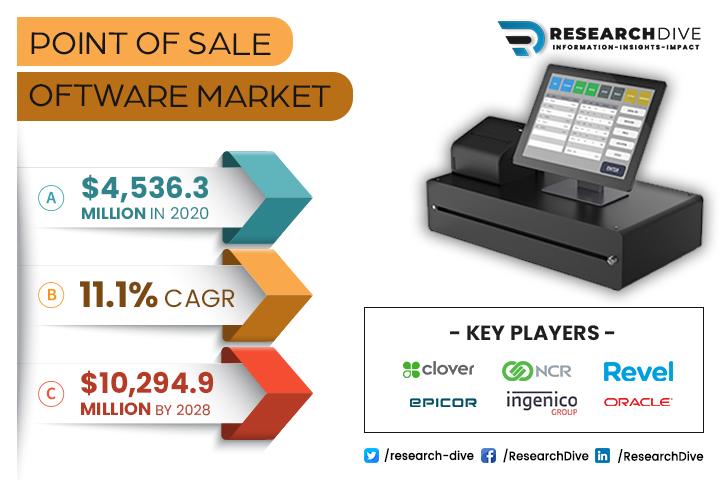Ultra-High Molecular Weight Polyethylene Market Size Report 2021, Recent Trends, Share, and Growth forecast to 2027
The global ultra-high molecular weight polyethylene market size is estimated to showcase eminent growth owing to the increasing demand from the aerospace and defense industry, observes Fortune Business Insights™ in its report, titled, “Ultra-High Molecular Weight Polyethylene Market Size, Share & Covid-19 Impact Analysis, By Form (Sheets & Films, Rods & Tubes, Fibers, Tapes, and Others), By End-Use (Automotive, Aerospace & Defense, Medical, Chemical, Electronics, and Others) and Regional Forecast, 2020-2027.” The market size was USD 1,691.2 million in 2019 and is anticipated to reach USD 3,319.0 million by 2027, exhibiting a CAGR of 10.1% during the forecast period.
Highlights of the Report:
In order to prepare this report, we have captured data on the revenue of several key players through secondary sources such as company websites, corporate filings, annual reports, and investor presentations. We have conducted extensive interviews with key industry experts, such as CEOs, VPs, directors, and executives in order to track and analyze competitive developments such as partnerships, mergers & acquisitions, new product launches, and research & development activities. Our next step included the bottom-up procedure to arrive at the overall size of the market.
Drivers & Restraints-
Increasing Demand for Protective Gear from Aerospace and Defense Industry to Drive Growth
The increasing demand for protective gear and equipment from the aerospace and defense industry, coupled with the high demand for a durable material to make fuel-efficient vehicles in the automotive industry is anticipated to drive the ultra-high molecular weight polyethylene market growth. In addition, the increasing military spending among nations is predicted to further strengthen the demand for UHMWPE. For instance, as per an article published on the World Economic Forum, in 2017, the military expenditure worldwide was estimated to reach USD 1739 billion. However, the high cost associated with the product is projected to hinder the growth of UHMWPE.
Regional Insights-
Increasing Demand for Electric Vehicles in U.S. to Help North America Dominate
North America is projected to dominate the global ultra-high molecular weight polyethylene market share with a value of USD 646.6 million in 2019. The increasing demand for electric vehicles in the U.S. is projected to drive the growth of ultra-high molecular weight polyethylene in the region. For instance, according to the U.S. International Trade Commission, there has been a 67% increase in EV sales between 2017 and 2019.
Browse Summary:
https://www.fortunebusinessinsights.com/ultra-high-molecular-weight-polyethylene-uhmwpe-market-102953
The global ultra-high molecular weight polyethylene market size is estimated to showcase eminent growth owing to the increasing demand from the aerospace and defense industry, observes Fortune Business Insights™ in its report, titled, “Ultra-High Molecular Weight Polyethylene Market Size, Share & Covid-19 Impact Analysis, By Form (Sheets & Films, Rods & Tubes, Fibers, Tapes, and Others), By End-Use (Automotive, Aerospace & Defense, Medical, Chemical, Electronics, and Others) and Regional Forecast, 2020-2027.” The market size was USD 1,691.2 million in 2019 and is anticipated to reach USD 3,319.0 million by 2027, exhibiting a CAGR of 10.1% during the forecast period.
Highlights of the Report:
In order to prepare this report, we have captured data on the revenue of several key players through secondary sources such as company websites, corporate filings, annual reports, and investor presentations. We have conducted extensive interviews with key industry experts, such as CEOs, VPs, directors, and executives in order to track and analyze competitive developments such as partnerships, mergers & acquisitions, new product launches, and research & development activities. Our next step included the bottom-up procedure to arrive at the overall size of the market.
Drivers & Restraints-
Increasing Demand for Protective Gear from Aerospace and Defense Industry to Drive Growth
The increasing demand for protective gear and equipment from the aerospace and defense industry, coupled with the high demand for a durable material to make fuel-efficient vehicles in the automotive industry is anticipated to drive the ultra-high molecular weight polyethylene market growth. In addition, the increasing military spending among nations is predicted to further strengthen the demand for UHMWPE. For instance, as per an article published on the World Economic Forum, in 2017, the military expenditure worldwide was estimated to reach USD 1739 billion. However, the high cost associated with the product is projected to hinder the growth of UHMWPE.
Regional Insights-
Increasing Demand for Electric Vehicles in U.S. to Help North America Dominate
North America is projected to dominate the global ultra-high molecular weight polyethylene market share with a value of USD 646.6 million in 2019. The increasing demand for electric vehicles in the U.S. is projected to drive the growth of ultra-high molecular weight polyethylene in the region. For instance, according to the U.S. International Trade Commission, there has been a 67% increase in EV sales between 2017 and 2019.
Browse Summary:
https://www.fortunebusinessinsights.com/ultra-high-molecular-weight-polyethylene-uhmwpe-market-102953
Ultra-High Molecular Weight Polyethylene Market Size Report 2021, Recent Trends, Share, and Growth forecast to 2027
The global ultra-high molecular weight polyethylene market size is estimated to showcase eminent growth owing to the increasing demand from the aerospace and defense industry, observes Fortune Business Insights™ in its report, titled, “Ultra-High Molecular Weight Polyethylene Market Size, Share & Covid-19 Impact Analysis, By Form (Sheets & Films, Rods & Tubes, Fibers, Tapes, and Others), By End-Use (Automotive, Aerospace & Defense, Medical, Chemical, Electronics, and Others) and Regional Forecast, 2020-2027.” The market size was USD 1,691.2 million in 2019 and is anticipated to reach USD 3,319.0 million by 2027, exhibiting a CAGR of 10.1% during the forecast period.
Highlights of the Report:
In order to prepare this report, we have captured data on the revenue of several key players through secondary sources such as company websites, corporate filings, annual reports, and investor presentations. We have conducted extensive interviews with key industry experts, such as CEOs, VPs, directors, and executives in order to track and analyze competitive developments such as partnerships, mergers & acquisitions, new product launches, and research & development activities. Our next step included the bottom-up procedure to arrive at the overall size of the market.
Drivers & Restraints-
Increasing Demand for Protective Gear from Aerospace and Defense Industry to Drive Growth
The increasing demand for protective gear and equipment from the aerospace and defense industry, coupled with the high demand for a durable material to make fuel-efficient vehicles in the automotive industry is anticipated to drive the ultra-high molecular weight polyethylene market growth. In addition, the increasing military spending among nations is predicted to further strengthen the demand for UHMWPE. For instance, as per an article published on the World Economic Forum, in 2017, the military expenditure worldwide was estimated to reach USD 1739 billion. However, the high cost associated with the product is projected to hinder the growth of UHMWPE.
Regional Insights-
Increasing Demand for Electric Vehicles in U.S. to Help North America Dominate
North America is projected to dominate the global ultra-high molecular weight polyethylene market share with a value of USD 646.6 million in 2019. The increasing demand for electric vehicles in the U.S. is projected to drive the growth of ultra-high molecular weight polyethylene in the region. For instance, according to the U.S. International Trade Commission, there has been a 67% increase in EV sales between 2017 and 2019.
Browse Summary:
https://www.fortunebusinessinsights.com/ultra-high-molecular-weight-polyethylene-uhmwpe-market-102953
0 Comments
0 Shares



